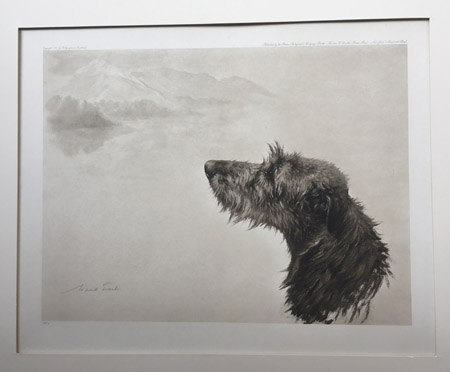
Scottish Deerhound
|
|
An old and noble breed, the Scottish Deerhound was known in Great Britain since at least the sixteenth century when it was acknowledged to be best suited for the pursuit of deer. Some believe that the early Scottish Deerhound was the same breed as the Irish Wolfhound, for the early names given both breeds are very confusing. Indeed, the early names refer more to the function of the dog rather than the breed, hence "The Irish Wolf Dog," the "Scotch Greyhound" or the "Rough Greyhound." Dr. Caius, writing in 1576, adds further confusion to the issue when describing Greyhounds: "Some are of the greater sorte, some of a lesser; some are smooth skynned and some curled, the bigger therefore are appointed to hunt the bigger beastes, the buck, the hart, the doe." Dogs which are clearly Deerhounds, however, are identifiable as early as the seventeenth century, and were considered most suitable to hunt deer. From early on, great value was set on the breed. Indeed, a desire for exclusive ownership on the part of the Highland Chieftains caused the breed to dwindle in number, reaching a low in the late eighteenth century. The restoration of the breed was subsequently undertaken by Archibald and Duncan McNeill, who established an extensive breeding program about 1825. The Scottish Deerhound appears in nineteenth century dog shows, but its true home remained in the Scottish Highlands where its pre-eminence as a hunter could come to the fore. Its great speed and keen nose made it a perfect companion for the Victorians, Prince Albert among them, who fled London to breathe the fresh mountain air. |
Home | About
the WS Gallery | Current
Exhibition | New
Additions | Search Our Inventory
| Commissioning Paintings | 19th
& 20th Century Oils | Contemporary
Artists | Works
on Paper & Collectibles | Books
| Christine Merrill
| Guest book | Email
Us
All images, designs and information on this site
are fully copyrighted © 1999
and may not be reproduced of used in any form or any manner, or displayed in
any way
on any website without the express written consent of The William Secord Gallery,
Inc.
William Secord Gallery, Inc.
29 West 15th Street 4th floor
New York, NY 10011
Between Fifth and Six Avenues
www.dogpainting.com
wsecord@dogpainting.com
Tel. 212-249-0075
212-249-0896
By appointment
